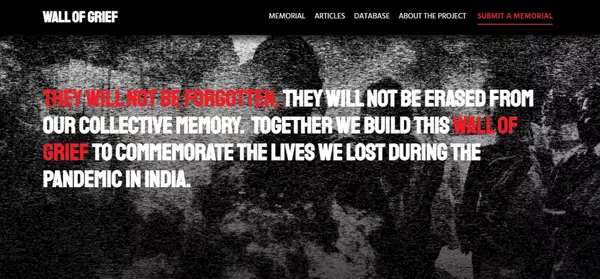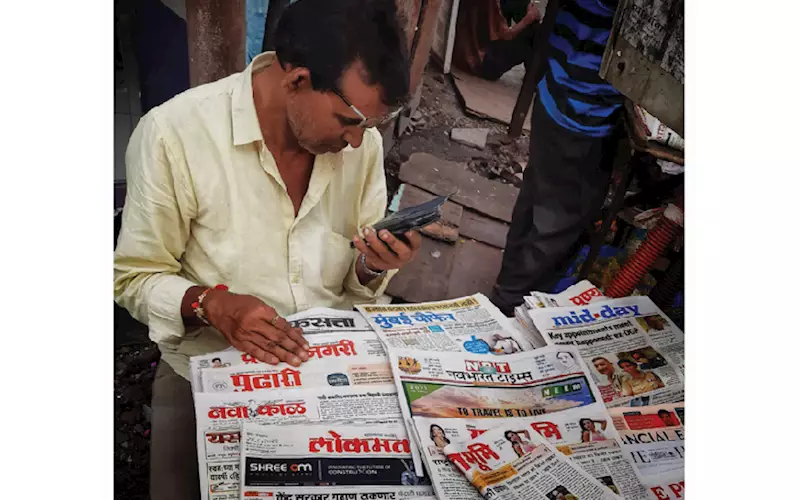Journalism during Covid-19: Loss of lives, layoffs and cutbacks
According to the Network of Women in Media (NWMI), so far, 538 journalists have lost their lives to Covid-19. And the situation is equally grim for those who are still reporting on the ground
15 Oct 2021 | By Dibyajyoti Sarma
As the Covid-19 outbreak started in early January 2020 and spread across the world, journalists, whether print, electronic or online have been our only connection with the outside world, especially during the lockdown period. In India, journalists are on the frontlines reporting the pandemic, in pursuit of promoting citizens’ right to information, and yet they are often at the receiving end of hostility – from the public and political pressure groups alike.
According to the Network of Women in Media (NWMI), so far, 538 journalists have lost their lives to Covid-19.
Journalism in dire straits
Not just loss of lives, journalists also had to be content with loss of employment, and salary cuts, as newspaper circulation dropped and newspaper publishers went on a backfoot and reduced the number of pages printed. The situation was even worse for the freelance journalists.
Cutbacks and layoffs began immediately after the first lockdown on 24 March 2020. The lockdown was followed by print news organisations suspending print editions. The salary cut ranged from 66% to 15%. News organisations laid off between 20% and 30% of editorial staff. Newspaper circulation dropped to 40% pre-pandemic levels in Mumbai and Delhi. English newspapers shut down 50% editions outside New Delhi and Mumbai.
Offering insights on how layoffs and cutbacks have affected India’s journalists in particular, and the news industry in general, in a webinar organised by the International Center for Journalists and the International
Journalists’ Network (IJNet), Cyril Sam, research analyst at PROTO, said as the Indian newspaper industry is largely dependent on advertising revenue, the threat is not digitasation, but how fragile the logistics are. Sam gave three examples of mass layoffs in recent years – first in 2016 immediately after demonetisation, in 2017 after the GST regime and in 2018 after the abrogation of Article 370. The 2018 instance was a curious one. Soon after Kashmir went on a lockdown after the abrogation of Article 370, newspaper circulation in India dropped significantly, as supply of apples from Kashmir stopped. Scrap newspapers were used to pack the apples and once the apple supply stopped, so did the demand for scrap newspapers and as a result, the newspaper circulation numbers dropped.
This time around, Sam said, newspapers started planning cutbacks and layoffs even before the lockdown was announced. In most organisations, journalists were forced to resign at a very short notice and salaries were cut without warning. Even those who have jobs are working at pre-2019 salary, as there has been no salary hike since 2020. There have been fewer full-time journalists, and most freelancer rates have come down. They usually don’t get paid and even if they are, the payment cycles are delayed.
Sam said, most recently, the Hindustan Times shut down its edition in Jaipur and The Hindu Group laid off journalists across publications.
So, what has been the impact on journalists, news gathering and news organisations?
Sam said Indian language journalists have been the worst-hit, but there is no exact data available. Meanwhile, English language journalists are working longer hours with fewer weekly offs and this has started to affect their mental health.
In terms of news gathering, English language news organisations now cover less geographical areas than pre-pandemic, and are restricted mostly to metros such as New Delhi and Mumbai. This is the direct result of the mass layoff, as journalists in rural areas were first to go in the layoff process.
Thus, stretched for resources, news organisations are now producing fewer stories and printing fewer pages. Now, they have limited budget for outstation reporting or enterprising reporting.
Sam said, in most instances of layoff, the journalists were asked to resign, not terminated. In early 2020, a bunch of journalist unions decided to approach the Supreme Court challenging the layoffs across news organistions, as it was in contravention against the advisories published by the government asking organisations not to lay off their employees. The unions challenged two organisations — the Newspaper Society of India and the News Broadcaster Society of India. Both the organisations denied that there were any layoffs because most journalists were coerced to resign, not terminated. Both these cases are being heard in court.
There’s a lot to be done
As the NWMI pointed out, in the early days of the pandemic, in the context of the tsunami of job losses and wage cuts in the media industry, the worst casualty has been authentic information from the ground that speaks truth to power. News-gatherers, whether they work independently or as employees of media houses, have been silenced in more ways than one over the past year. Journalists today are often criminalised for doing their duty and, at such times of trouble, they are virtually abandoned by many of the media houses they work for. To make matters worse, the layoffs and pay cuts have no doubt put pressure on those who still have jobs to take even more risks to get stories.
Over the past year, more than 60 journalists (as of 27 April 2021) who reported on the pandemic and the plight of stranded and starving migrant workers were penalised for their work. They were arrested, issued show-cause notices or interrogated, slapped with charges under the draconian Unlawful Activities Prevention Act, 1967, the Indian Penal Code, 1860, the Epidemic Disease Act, 1897 and the Disaster Management Act, 2005.
Journalist Siddique Kappan was arrested under the UAPA when he was on his way to cover the gang-rape of a Dalit woman in Hathras in Uttar Pradesh. Kappan recently tested positive for Covid-19 and is now, shockingly, chained to a hospital bed.
Under the circumstances, the NWMI has demanded that the central and state governments, and all media houses pay due attention to the health and well-being of media workers; provide them with PPE while on the field and minimise the risks they have to take in the course of carrying out their work; protect journalists’ legal rights and stop penalising them for exposing the ground reality; prioritise vaccination for journalists as frontline workers; extend medical insurance, coverage of medical costs and compensation for death to media workers; facilitate work-from-home during the pandemic for those whose job descriptions do not require them to be out in the field.
Relief for journalists
According to a news report published on 27 May, in a suo-moto move, the Ministry of Information and Broadcasting and the Press Information Bureau had compiled the details of journalists who lost their lives due to the pandemic in 2020 and 2021 and started a special drive to provide assistance to their families under the Journalist Welfare Scheme. Accordingly, the Central Government approved a proposal of the Journalist Welfare
Scheme Committee to provide financial relief of Rs 5-lakh to each of the families of 26 journalists who died due to Covid-19. In the financial year 2020-21, the Central Government provided assistance to 41 families of the journalists deceased due to Covid taking the total number to 67.
Meanwhile, in May, the Odisha government declared working journalists as Frontline Covid Warriors, recognising the risks they undertake to cover the pandemic. Approving a proposal to this effect, chief minister Naveen Patnaik said, “Working journalists are doing a great service to the state by providing seamless newsfeed, making people aware of issues relating to Covid-19 during these very trying times and they are a great support in our war against Covid.”
According to the chief minister’s office, the decision is likely to benefit 6,944 working journalists. These journalists have been covered under Gopabandhu Sambadika Swasthya Bima Yojana, and will get health insurance cover of Rs 2-lakh each. Besides, an ex-gratia amount of Rs 15-lakh is also being provided to the next of kin of journalists who die of Covid-19 while performing duty. Seventeen journalists have died of Covid-19 since the last week of March this year in Odisha.
The Wall of Grief project

An initiative by The Reporter’s Collective, the Wall of Grief is an online memorial to document the lives lost in India during the Covid-19 pandemic. The broad aim of this project is to visualise the scale of tragedy and provide a cathartic space to lakhs of people who are adjusting to lives without their loved ones.
The website has two main rooms. One contains a memorial to people who died. On the Wall of Grief people can put up details of their loved ones whom they lost in the pandemic. The other hosts a resource centre with pan-India data on deaths collected under the Wall of Grief project as well as external sources of data on pandemic deaths. For details, visit the website.











 See All
See All